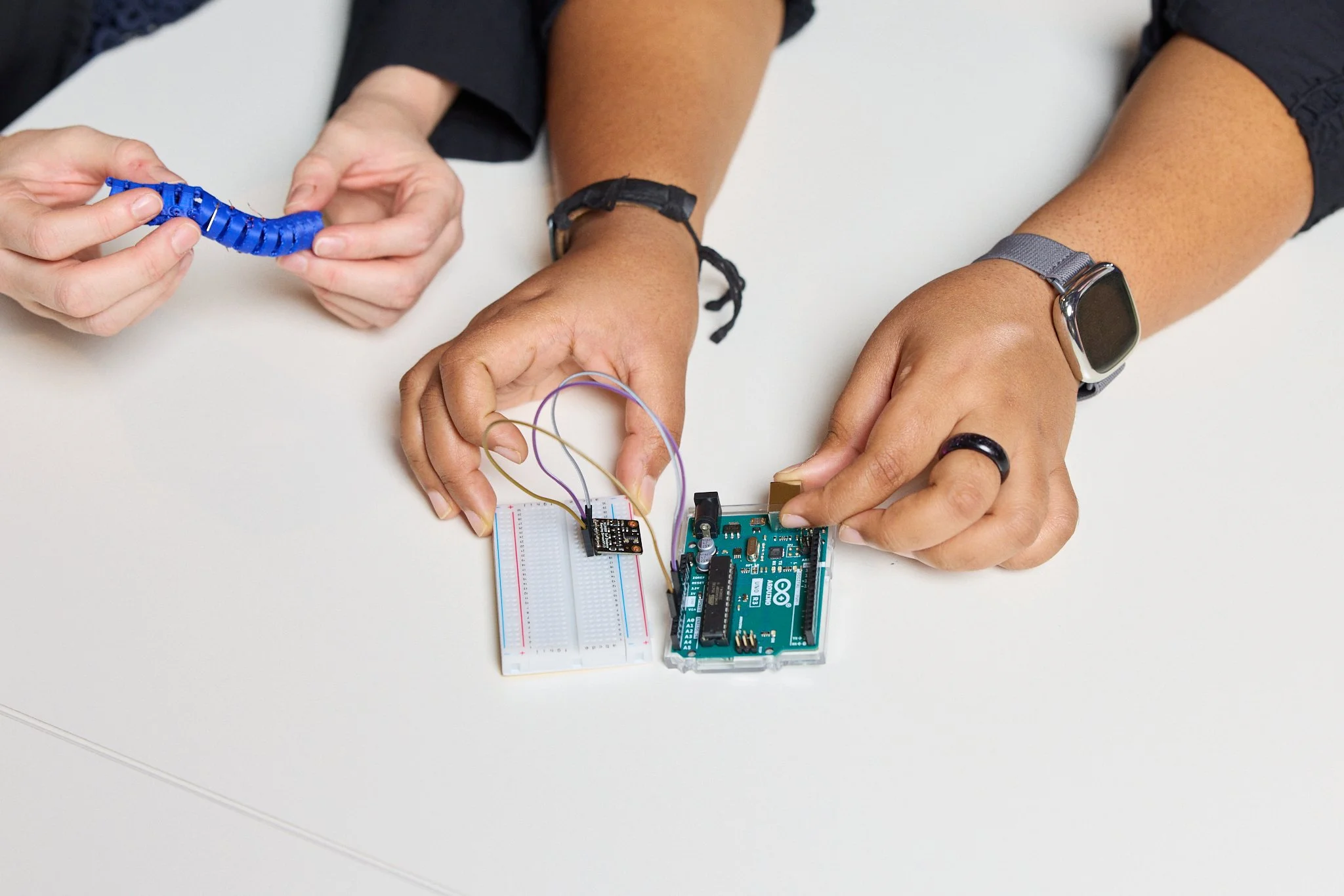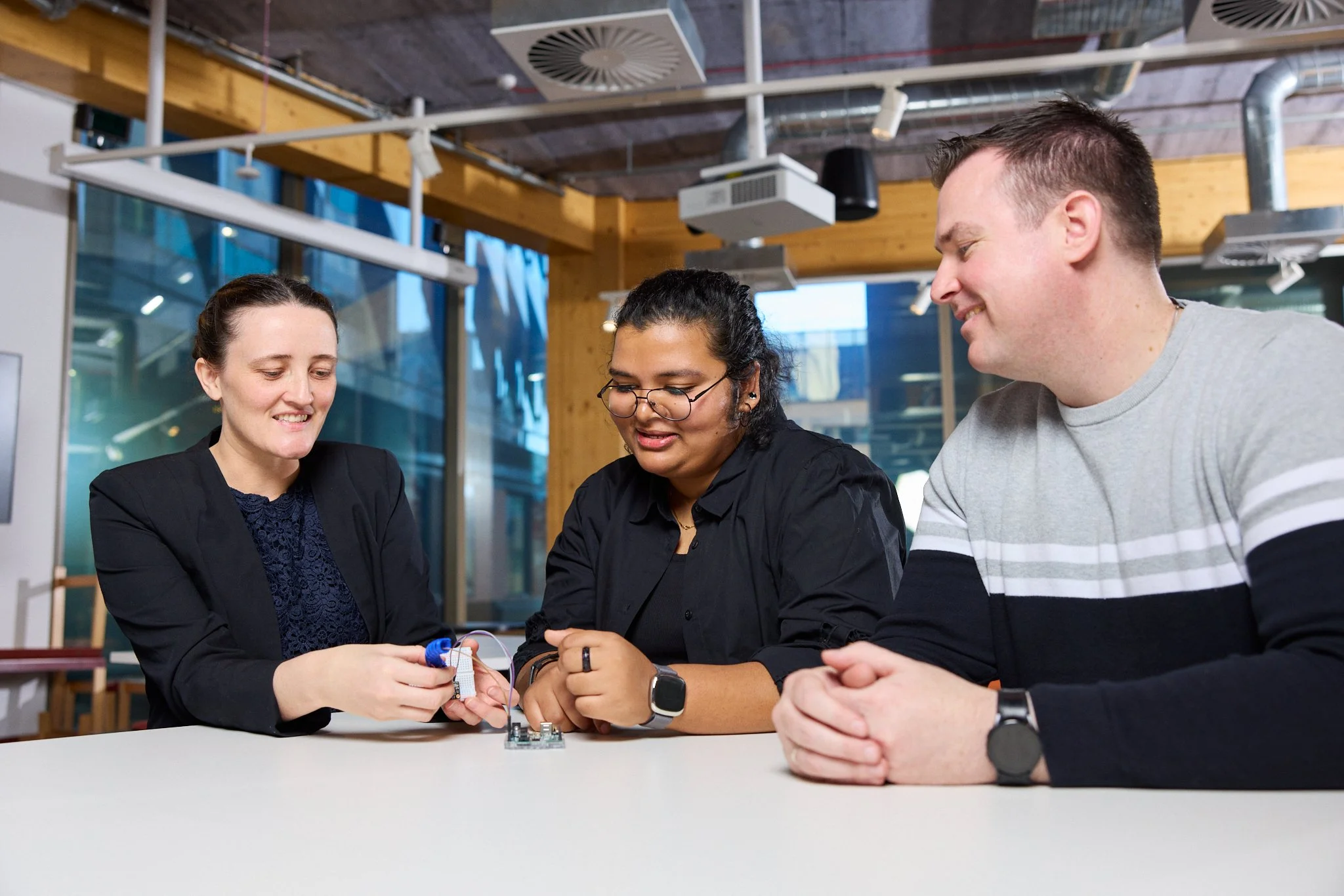ELLIS Medical Solutions: Revolutionising ICU care with real-time respiratory monitoring
Each year in Australia, approximately 140,000 patients are intubated in intensive care units (ICUs) and 40% of them develop respiratory complications due to mucus blockages. These blockages often go undetected until a patient begins to deteriorate, as current clinical tools rely on intermittent checks and delayed diagnostics. ELLIS Medical Solutions is tackling this critical issue by creating a device that offers continuous, autonomous monitoring, helping clinicians detect complications earlier and improve patient outcomes.
A critical care problem
Respiratory complications are a common, yet often delayed concern in the ICU. For intubated patients, who cannot clear their airways as a healthy person would, mucus buildup can quickly lead to life-threatening blockages. Existing detection methods are fragmented and largely reactive, with clinicians relying on occasional assessments and visual cues that may come too late.
ELLIS Medical Solutions aims to shift this paradigm. With backgrounds in biomedical engineering, product development, and people leadership, the founding team have focused their energy on solving this urgent and widespread problem. Liz Davis, CEO, draws from a career in organisational leadership; Lee M Hanify brings expertise in product management and technical solutions; and Shirdheen Murali, CTO, is a biomedical engineer with a software lens, leading product development.
ELLIS Medical Solutions team - Liz Davis, Shirdeen Murali & Lee M. Hanify
Their goal? A smarter, more responsive ICU environment that can anticipate complications before they become critical.
A new approach to respiratory monitoring
ELLIS Medical Solutions is developing a novel medical device that lives inside the patient and provides continuous monitoring of the respiratory tract. The device autonomously identifies complications as they form, streamlining diagnosis and enabling earlier interventions.
ELLIS Medical device prototype
What makes the solution different is its focus on early detection. While existing tools may be effective once a problem is suspected, the ELLIS device is designed to flag issues before symptoms worsen. This could reduce time in ICU, lower the burden on clinicians, and most importantly, save lives.
The concept was born through the University of Melbourne’s Biodesign Innovation course, where the founding team met and formed. Through months of intensive observation in critical care settings and extensive clinician interviews, they identified a gap that current technologies weren’t addressing: the need for real-time, autonomous surveillance inside the body.
Strength in the team
Unlike many research-led ventures, ELLIS Medical Solutions formed around a shared passion and problem, not a pre-existing invention. Liz, Lee and Shirdheen each bring complementary skills to the table. Liz brings a strategic leadership style and a passion for team building. Lee bridges the gap between tech and commercialisation, and Shirdheen anchors the technical side with deep domain knowledge in biomedical engineering.
ELLIS Medical Solutions team with a prototype of their device
The trio didn’t know each other before joining Biodesign but quickly bonded over a shared drive to push boundaries in medicine. The team values curiosity, ambition and a commitment to impact, which has helped them not only design a strong product but also build a startup culture of trust and momentum.
“We always said we wanted to be blue-sky thinkers,” says Liz. “If you’ve got something this good, you have to take it as far as you can.”
Making moves: recognition and next steps
Since forming, the ELLIS team has built an impressive list of milestones. They were awarded first prize at the University of Melbourne’s Endeavour Awards (Stephen Ho Award), took home the People’s Choice Award, and went on to win the MedTech Actuator Origins pitch. They’ve also secured the Stephen Ho Accelerator Grant and an Industry Growth Program Advisory Grant.
These wins have helped validate the team’s idea and fuel their ambitions. Over the next 12 to 24 months, ELLIS aims to complete a clinical prototype, begin animal trials, and prepare for regulatory approval. Their longer-term vision includes expanding the technology to monitor other areas of the body that could require continuous monitoring and tackle a wider range of complications.
To support this next stage, they’re currently raising a pre-seed round, with a focus on partnering with investors who align with their mission and values.
Finding community through TRAM
Joining TRAM Air was a strategic move for the ELLIS team. “We came from a structured learning background, so we knew we thrived with milestones and community,” says Lee. “TRAM has offered that and so much more.”
From access to mentors, many of whom have walked the same Biodesign path, to the collaborative culture of the TRAM office, the team has found both guidance and solidarity. “The cohort is full of people who are scarily smart and building amazing things,” says Liz. “To be among them is humbling and motivating.”
The program also marked a personal turning point. “You get to a point where you have to choose safety and security or the big scary thing that you won’t have another chance to do,” says Lee. “And we chose the scary thing.”
As first-time founders, they’ve found strength in community. Whether it’s bouncing ideas off fellow startups, learning from mentors past mistakes, or just having an office space to work from and laugh in, TRAM Air has given ELLIS Medical Solutions the ecosystem to thrive.
They’re also committed to paying it forward: “We always try to give back, meeting other teams, sharing lessons from our own pitfalls. Being part of and giving back to the ecosystem is really important to us,” Liz says.
Looking ahead
The team’s goal remains clear: getting their device into hospitals, where it can make a tangible difference to patients.
“When we put our device inside a patient for the first time,” says Liz, “that will be a very big moment.”
Read more about the 2025 TRAM Air cohort
Connect with ELLIS Medical Solutions
Get in touch with Masha to learn more about TRAM Air: masha.pelipas@unimelb.edu.au



